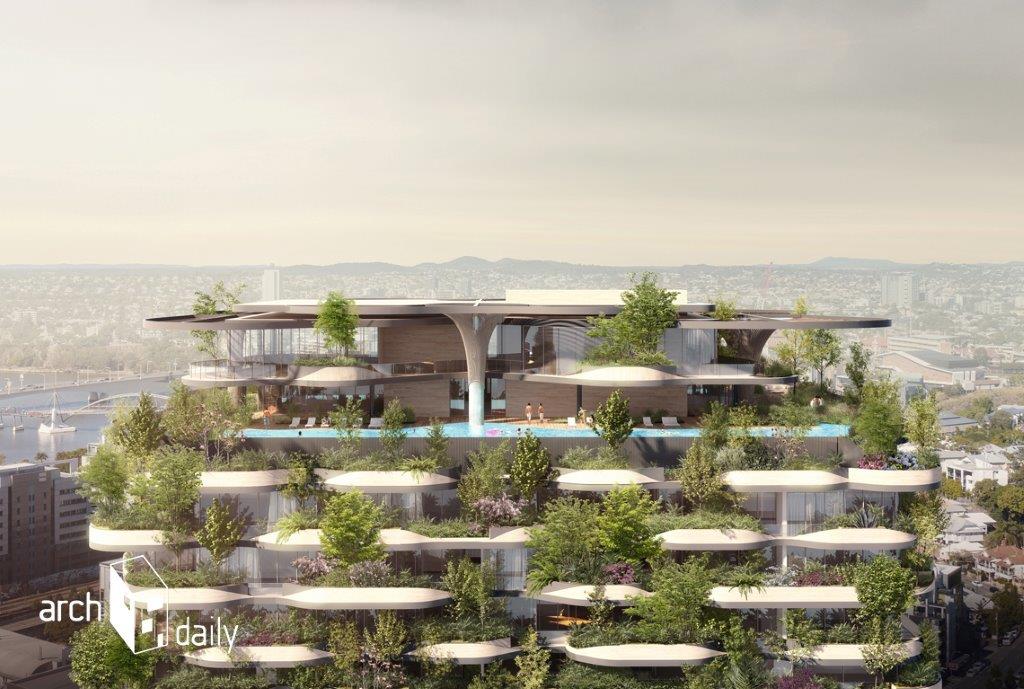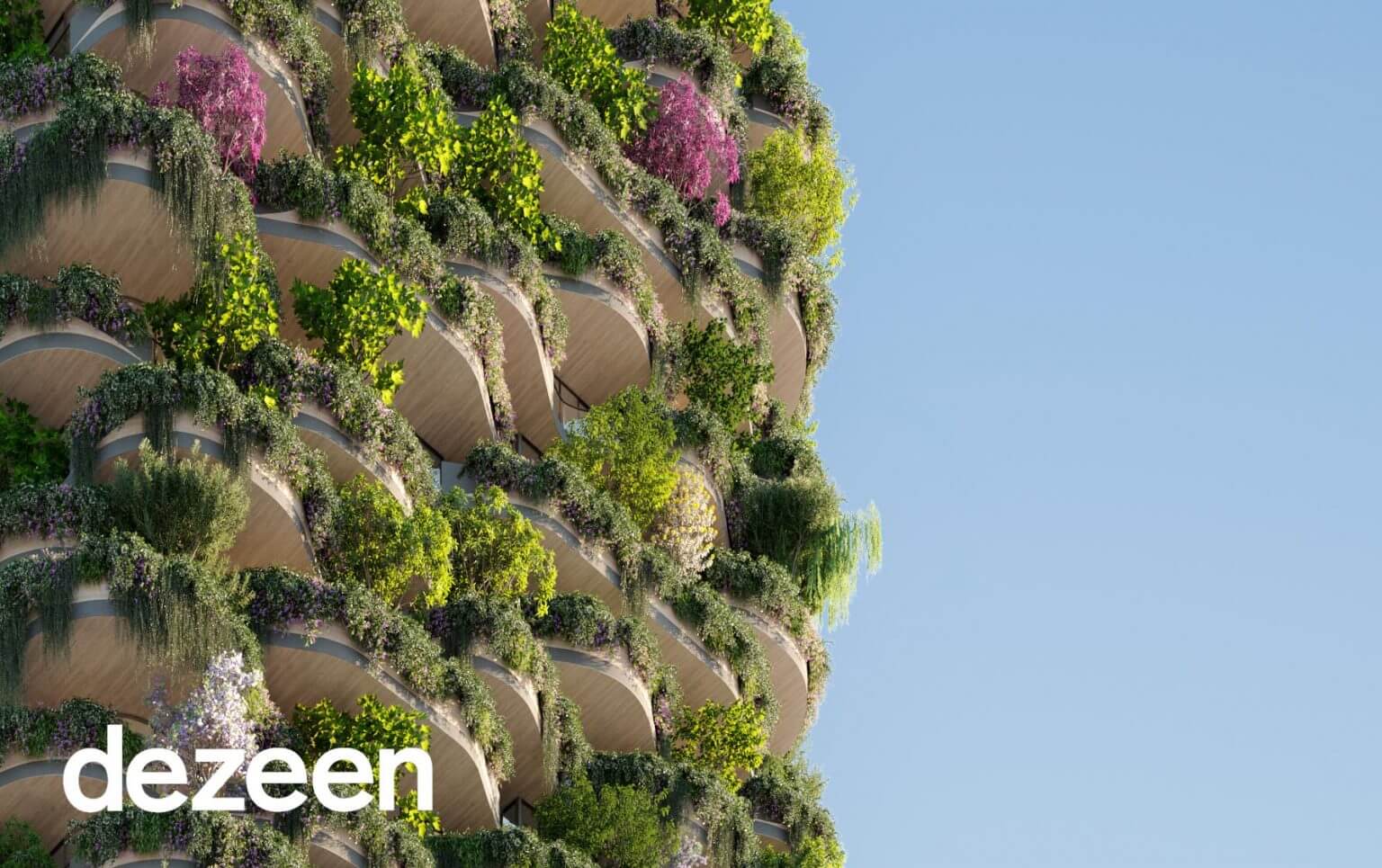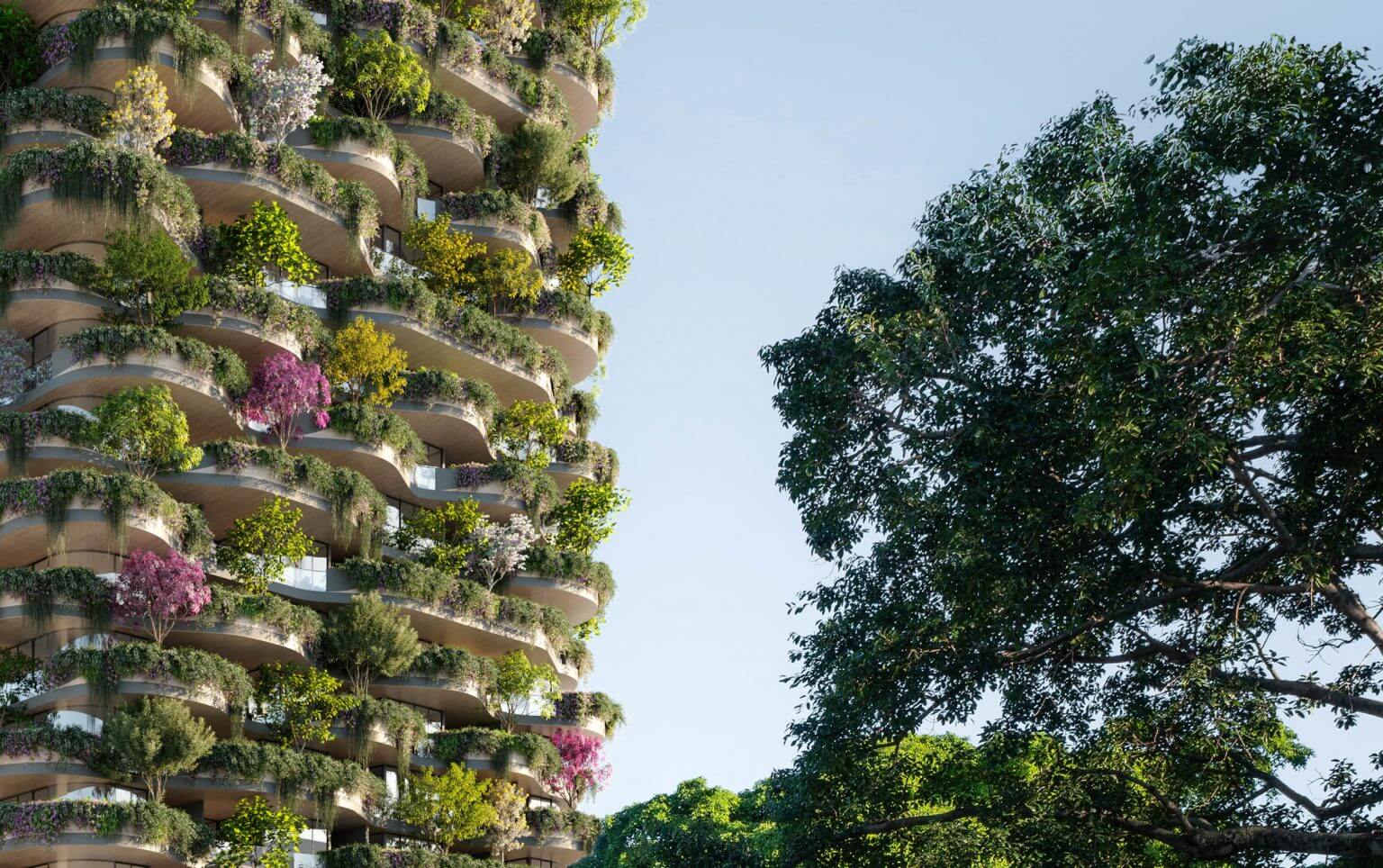Advertisement
A new design concept is pushing the limits of green building. Extreme as it may seem, this approach is an indication of where architecture is going.
Living architecture in Brisbane’s Urban Forest
In September 2020, Koichi Takada Architects unveiled their design for Urban Forest: a 30-storey apartment building in Brisbane, Australia, covered in 1,000 trees and 20,000 plants. The developers are already calling it ‘the world’s greenest residential building’.

‘Post COVID-19, I think it’s a great opportunity to pause and rethink and not just adapt, but shift the paradigm from industrial to natural,’ studio founder Koichi Takada told Dezeen. ‘Concrete, steel and glass are very hard and solid industrial materials. Let’s call them dead materiality. We need to be embracing more living materiality, living architecture.’
Advertisement
Living architecture uses the possibilities given by natural, living organisms to build low-cost and sustainable construction. It’s not a new concept (you may have heard of the ancient Hanging Gardens of Babylon, for example), but at a time when climate change is such an urgent global issue, could a move towards living architecture be the way forward for South African property developers?
A workable eco-city?

‘The Australian project is just a concept and has not been built yet,’ says Dr Ida Breed, a Senior Lecturer at the University of Pretoria’s Department of Architecture. ‘In China the “eco-city” approach is strongly supported by the government and is rooted in the ancient Chinese philosophy of co-living with the environment, but it’s not affordable and accessible to all. You often just see the nice renderings and never workable end examples.’
But could it work? ‘Yes it can,’ says Breed. ‘But you need people who understand the systems and are willing to maintain them.’
The China example is worth looking at. Qiyi City Forest Garden – a complex of eight 30-storey residential towers in Sichuan Province – opened this year to great fanfare, with each of the 826 units (all of which have sold) bedecked with its own plant-filled balcony. It’s a wonderful example of living architecture … and the mozzies love it. By September, barely a handful of families had moved in because of an uncontrolled infestation of mosquitoes. But it’s not all bad news. The original ‘vertical forest’ – Bosca Verticale in Milan – has been standing, and growing, and housing people, since 2014.
Building for the future
Sadly – at as Qiyi City – the cruel practicalities of nature often derail the lofty ambitions of ‘living architecture’. ‘A lot of examples are very high-tech and expensive, and for the same reason not always so sustainable or good for the environment,’ says Breed. ‘What we need are more low-technology, local and affordable methods of co-living. One might argue that green vacant areas or plant food in horizontal spaces might be very possible – and more productive and less expensive – in urban environments, where in South Africa we still have space.’

Breed adds that in the South African context it’s difficult to balance the basic needs of the poor with aspirations to pursue high-tech ideas. ‘But,’ she says, ‘they’re both happening.’
Still, sustainable approaches – if not actual Green Buildings, then at least greener buildings – are certainly the future of architecture. ‘The UP Department of Architecture is renowned for its ecosystemic approach,’ says Breed. ‘Landscape architecture students, architecture and even interior architects are moving towards greater sustainability and incorporating food production and living materials in urban environments to make future cities more liveable and more sustainable – more productive, and a place where biodiversity can co-exist.’
Some architects may push that to its limits – which is where you’ll find your Urban Forests – while others will simply consider eliminating unsustainable building materials. Either way, there’s clearly a move towards greener building … and it’ll take more than a swarm of mosquitoes to keep it away.



